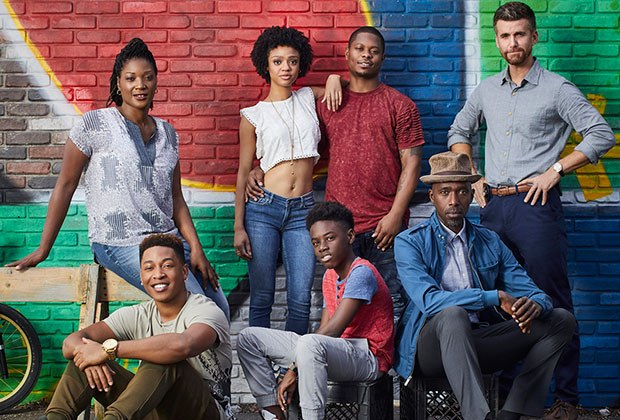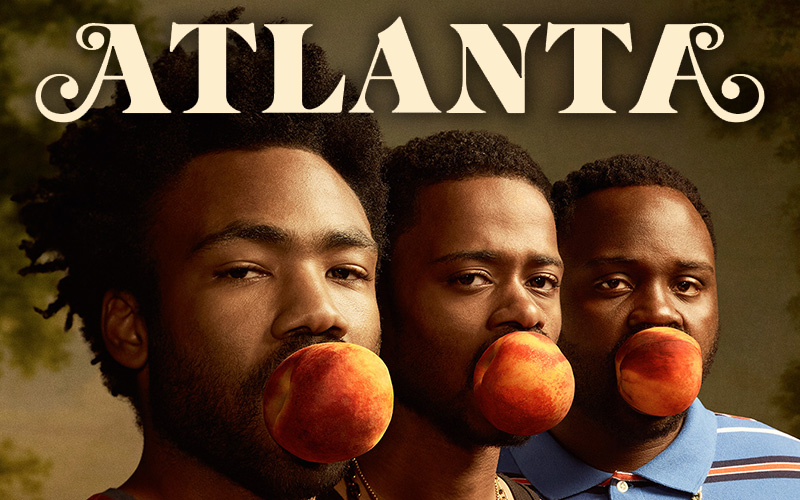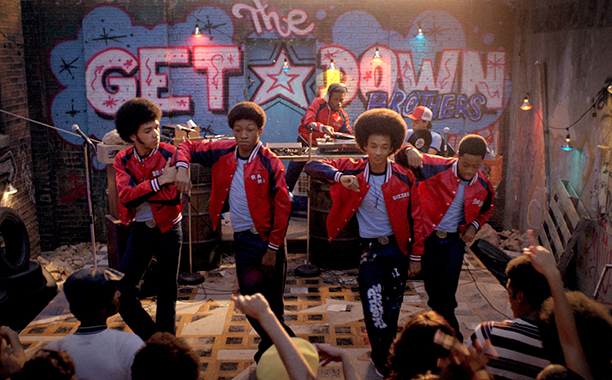Showtime’s The Chi and the Surge in Black-Cast TV Dramas
Tim Havens / University of Iowa

Showtime’s new series, The Chi, has drawn countless comparisons to HBO’s The Wire. Set in a South Chicago neighborhood, The Chi has many of the same themes as The Wire, an ensemble cast, and relies on extensive on-location shooting to create a strong sense of place. At the same time, while The Wire addressed the institutional and economic causes and conditions of black inner-city poverty, The Chi explores the interiority of lives lived alongside the day-to-day grind of poverty, violence, and social decay. Perhaps even more interesting, in its characterizations, its cinematography, and its sound track, The Chi manages to find hope, dignity, and even beauty in back urban life in a way that The Wire never did.
Despite some complaints that the social critique of The Chi is not as sharp as The Wire, the series manages to tell a unique story and, in African American media studies, telling unique stories has long been considered an objective good. Moreover, one could argue that the sympathetic exploration of the characters and their lives reflects the unique standpoint of its African American female showrunner, Lena Waithe; that, at both a narrative and a stylistic level, the series exhibits a distinctly black feminine sensibility.
Perhaps the most surprising aspect of The Chi is that it launched in an era of abundance for predominantly black-cast television dramas. Even five years ago, a new, well-funded black-cast drama series would have caused a splash, but today, we barely take notice. To name only a few prominent examples, there’s Power (2013-present) on Starz, Dear White People (2017-present), She’s Gotta Have It (2017-present), and The Get Down (2016-2017) on Netflix, Atlanta (2016-present) on FX, Being Mary Jane (2013-present) on BET, Black America (expected, 2018) on Amazon, and Empire (2015-precent) on Fox.


Alvin Poussaint, among others, has noted that African American characters on television have largely been restricted to comedy. Before 2013, the only predominantly black-cast dramas in U.S. television were the ABC miniseries Roots (1977), the Showtime series Soul Food (2000-2004), and HBO’s The Wire (2002-2008). Why have we seen this recent explosion in black-cast dramas, when for nearly 70 years of TV history, they were absent, and what might this new slate of black-cast dramas tell us about current state of African American television culture?
One popular narrative explaining the surge in black-cast series attributes it to a growing number of nonwhite showrunners who often seek creative talent from outside of traditional TV circles. But major changes in the portrayals of African Americans on television have always been linked to broader changes in the commercial institutions that produce, fund, and profit from American television. In the 1980s, competition from cable, combined with growing African American purchasing power, led to a growth in network sitcoms focused on predominantly black casts (Gray, 1995). [1] In the 1990s, Fox Broadcasting’s efforts to start a fourth network focused on underserved African American audiences in large urban markets, leading to a host of distinctly black situation comedies produced and written by African Americans (Zook, 1999). [2]
In exploring the industrial dimensions of the changing fortunes of black-cast dramas, the first thing to note is that several are high-budget series offered through subscription services – a significant departure from the past, when black-cast series had low budgets compared to white series. Among these subscription series, some, like The Chi, can truly be called auteur TV.
How might we explain the sudden willingness of the television industry to invest money in black-cast series? For one thing, African Americans tend to spend more on subscription television than other U.S. racial groups. However, as I noted in a previous Flow post, African Americans also undersubscribe to subscription streaming services: while urban black subscriptions to video-on-demand services are 10% higher than average, subscriptions to streaming video-on-demand services are roughly the same as other racial groups. Moreover, Horowitz Research’s State of Cable & Digital Media: Multicultural Edition reports that, while African Americans watch a disproportionally large amount of TV drama, they watch only an average amount of original streaming dramas.
These statistics suggest that the African American market for subscription streaming services remains somewhat untapped, and that original television dramas may a good way to attract them. With competition for subscribers growing, it should perhaps come as no surprise that black-cast dramas helmed by African American creatives have proliferated. We saw this competition on display last summer when the new HBO series Confederate, a counterfactual history series from two white creators based on the premise that the Confederacy won the Civil War, spurred strong opposition from African Americans. In the wake of the controversy, Amazon immediately announced its own Civil War counterfactual series, Black America, which narrates the story of a separate black nation created within the borders of the United States and is produced by Will Packer and Aaron Magruder.
If I am correct that subscription television services, particularly streaming services, have begun to use black-cast dramas to increase African American subscriptions, some important questions remain. Are these services targeting all black viewers equally, or are certain members of the African American community more desirable? And, how important are non-black viewers in the decision to create black-cast television dramas?
My answers to these questions are speculative. They are rooted in the notion that, much as among white Americans, African American taste cultures tend to divide along class lines, with the proletariat classes preferring content that is rowdier, gaudier, and more visceral than the refined, intellectual culture that their bourgeois counterparts enjoy. Within African American studies, class-based taste differences in comedy and humor have been well documented, going back to Mel Watkins 1994 classic book, On the Real Side. These differences in class-based taste cultures, however, are less well theorized when it comes to television and film drama.
Returning to The Chi, one of its most noteworthy aesthetic elements is its conscious and effective use of stylized editing and camera techniques. In the first sequence featuring a young man named Coogie biking through the neighborhood, past bright graffiti and blighted buildings, we see several jump cuts that unsettle the viewer and prime us for his eventual discovery of a dead body. In episode three, when Coogie’s older brother get involved in a shooting that threatens to ruin his romantic relationship and his budding career as a successful chef, the narrative continues to circle back over and over to the dark, posterized scene of the shooting until we realize who the true shooter is. There are several moments in the series that are highly stylized, with the camerawork, lighting, and editing all working together to reveal the stark beauty of the urban landscape.
In other words, the artistry of the series is clear. At the same time, it is an artistry primarily born of film schools and art house cinemas, rather than the rich visual history of black popular culture. By contrast, the Afrofuturist aesthetics of a film like Black Panther into a populism that transcends class-based African American tastes cultures. Of course, my point is not that working class and poor African Americans can’t get textual pleasure from watching The Chi. However, I would argue that The Chi’s aesthetics appeal to a decidedly middle-class, liberal subscriber, regardless of race.
For much of the history of African American television, series combined bourgeois and proletariat aesthetics in an effort to appeal to both working-class and well-off African Americans. To be viable, broadcast series needed to maintain as many black viewers as possible, while also incorporating white viewers. Not that every series achieved this balance, but most black-cast series tried. By contrast, today’s high-budget black-cast dramas seem designed to splinter the African American audience along class-based taste culture lines in an effort to cobble together an affluent multi-racial subscriber base.
Image Credits:
1. Cast of Showtime’s The Chi
2. Promo for FX’s Atlanta
3. Still for Netflix’s The Get Down
Please feel free to comment.
Tim, thanks for this column. I am also beginning to think through the surge of black-cast dramas, particularly in conversation with the genre’s seeming willingness to engage with (homo)sexuality. I also very much appreciate that you (as per usual) are considering industrial questions rather than (necessarily) textual ones, which is an important move forward from the work that many scholars (many of whom sit “outside” of media studies) do when faced with mediated blackness.
Thanks, Al. It’s nice to know that other people are addressing this as well. As you can tell from the column, I’m very early in my thinking. I do find it interesting that, for the moment at least, African American viewers are being seen as (to use Herman Gray’s phrasing) “economic” as well as “political” subjects by the streaming industries, and the way that this change has an impact on the kinds of television shows we see featuring PoC. I think the (homo)sexuality angle is really intriguing to bring into the mix as well.
Pingback: In Memoriam: Black Twitter and TV Cancellations Jacqueline Johnson / University of Texas at Austin – Flow